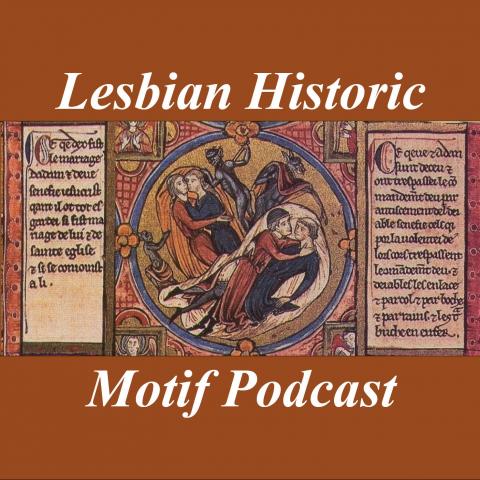Blog
Thursday, September 1, 2016 - 13:24
Under what circumstances am I a man writing gay sci-fi?
If the above question seems nonsensical to you, consider the possibility that it is because you are the default member of most categories you are included in. I put out a brainstorming call for today’s Random Thursday blog and got a request to talk about “the generic ‘man’” in the context of writing about female characters in a patriarchal society. As usual with random prompts, I reserve the right to go off in entirely different directions with a topic than intended. So I’m going to talk about the extra emotional tax of being a non-default case.
To begin with, let’s note the categories in which I am the unmarked default. For example, I’m white. And although I’m an atheist raised in a non-conformist religious tradition (Quakers), my cultural heritage can reasonable be described as generic Protestant. So if I’m buying something labeled “flesh-tone” I can expect that the color will match the tone of my flesh. And if a workplace schedules days off to coincide with religious holidays, I can expect that they will correspond with the days I grew up celebrating as holidays. So this essay isn’t about “poor, poor, pitiful me”, it’s about using the experiences I can best speak to in making my point, rather than appropriating someone else’s experiences to do so.
Talking about the “generic man” or “generic he” is a useful starting point, because it’s a discussion many people have had at some point. You know, the one about how “man” just means “person of any gender” and should be understood as such, not made a fuss over for being off-putting and exclusionary. Because a job listing that says, “we’re looking for a man who can do X” couldn’t possibly be intended to convey “and we aren’t allowed say so but we really don’t intend to hire a woman for this job”. Except of course when it does mean that. But in some ways, the ubiquity of the “generic man” makes it less useful as an example. So let’s talk about writing gay sci-fi.
Because I don’t. Except, of course, when I do.
Navigating the online categorization and labeling of orientation-related fiction means constantly having to investigate and evaluate and ask whether “gay” means “male homosexual”[*] or whether it means “homosexual of any gender” or whether it means “anyone in the LGBTQ spectrum” or whether it means “we want the progressive cachet of claiming we’re inclusive of the whole LGBTQ spectrum but when it comes down to it male homosexuals are the only group we care about.”
[* I realize the “h word” can sound dreadfully antiquated these days, but sometimes it carries the gender neutrality one needs for the purpose.]
A good example is the small Seattle book conference “Gay Romance North-West”. When I first heard of it, my reaction was, “Well, it’s almost certainly limited to m/m books, given the name.” But because I can’t afford to ignore possible opportunities, I paid the extra emotional tax of investigating the group in detail to see if my impression was correct. I say “extra tax” because I neither had the ability assume that my work would be included nor could I rely on the efficiency of being certain that it wouldn’t. As it happened, I was both right and wrong. The name had been established when the group was m/m centered, but the conference was non-specific. So last year I attended. But in addition to the “extra tax” of determining the exact definition intended, I pay the extra tax of attending an event whose name will more easily draw attendees who assume the default topic of m/m rather than expecting (or even seeking out) books with other orientations.
More often, I pay the non-default-tax in lost opportunity. If a review site, or a publicity opportunity, or a conference, or what have you identifies itself as “gay”, I just cross if off with the expectation that 80% of the time it specifically does intend to exclude me, maybe 15% of the time my presence would be tolerated but in no way supported, and the remaining 5% of the time may participation may be actively desired be I’m going to end up being marginalized anyway for the above reasons.
So what about sci-fi?
If you want to hear religious debates, ask a wide cross-section of people whether the category “sci-fi” includes fantasy. I use “sci-fi” rather than “science fiction” advisedly, although many of the same debates can be had for the longer form. In much the same way as “man” or “gay”, the category sci-fi can always be assumed to incorporate “science fiction”, but one pays an extra effort-tax to determine whether any specific usage welcomes fantasy.
The facebook/online group Queer Sci-Fi explicitly welcomes writers and readers of fantasy. The relatively new subgenre category of “sci fi romance” has solidly established an expectation that fantasy is excluded. The acceptance of fantasy as an integral part of the World Science Fiction Convention is taken for granted today, but if you go far enough back (or scratch deep enough beneath some surfaces) that acceptance becomes more tenuous. If I am in a literary venue that identifies itself using the label “sci fi” or “science fiction”, I pay the extra tax of having to determine whether fantasy is considered off-topic.
So there you have it. Picked apart into its components, and encountered in the right context, I might be perfectly acceptable to someone looking for “a man who writes gay sci-fi”. But it sure as hell isn’t the way to bet. And if that’s what you’re advertising for, don’t be surprised if people like me don’t even bother to ask.
View comments (2)
Wednesday, August 31, 2016 - 08:00
While A Little Princess uses a very omniscient voice, it's also the case that the majority of the novel works through Sara's point of view and her experiences. So it's a bit of a break with the flow for Chapter 14 (What Melchisedec Heard and Saw) to stand entirely apart from her. It occurs to me, though, that in a way, Melchisedec the rat is standing in for Sara's connection to the events.
For the most part, we can view the anthropomorphism of Melchisedec as part of Sara's fanciful invention. (We can also allow of a bit of authorial ignorance regarding the social biology of rats, in positing Melchisedec as the head of a cozy nuclear family, with Mrs. Melchisedec waiting at home with the children.) The title of the chapter is not the only prompt we are given that the rat is to be interpreted as our window into these events. We view the intrusion of Ram Dass and of Mr. Carrisford's secretary into Sara's attic through the rat's eyes and reactions, even as the authorial voice assures us that, "Melchisedec did not know [who they were]." And it is implied that we are made privy to their discussions there through Melchisedec's perceptions, despite acknowledgement of the rat's deficiencies as a witness. "How much he understood of the talk he heard I am not in the least able to say; but, even if he had understood it all, he would probably have remained greatly mystified."
This leaves us with a somewhat curious mystery as to why Melchisedec has been set up as our witness at all. (And that's aside from the question of whether a proper English rat would have been expected to understand a word of Hindi which--as discussed in the consideration of Ram Dass's linguistic competencies--must be assumed to be the language in which he and the secretary are conversing.)
Digression: I'm always fascinated by such narrative structures for explaining or excusing how the content of a story is transmitted to the reader. During the Worldcon panel on Shelly and Austen, I came up with a shorthand for this fascination: the fiction of a story as truth versus the truth of a story as fiction. That is, has the author created structures to create the illusion that the events of the story actually happened in real life and in real space (somewhere) and that the knowledge of those events has been conveyed via a documented "chain of evidence" such as first-hand accounts, letters, diaries, etc.? Or is the structure of the story such that the author and reader begin with an understanding that the events are entirely fictional invention, and that therefore there is no need to explain how the author became familiar with them? For example the "fiction of truth" approach, when applied to secondary worlds, requires a traveler's tale such as we see in the opening of Edgar Rice Burroughs' Barsoom novels. The topic came up in the panel discussion in the context of the framing narrative for Frankenstein. In contrast, the "truth of fiction" approach is the default today, where no explanation or excuse is considered necessary for relating stories with no chain of transmission from the characters to the reader.
In this context, the use of Melchisedec as part of the "chain of narrative transmission" is both nonsensical and unnecessary, given that other scenes external to Sara's direct experience have been related directly and given that there is no fiction that the rat in any way conveys the knowledge of these events to another party. And yet there's clearly a sense that he is standing in for the reader's access to the events of this chapter in some fashion. But I digress...
The purpose of this chapter is for Ram Dass and the secretary to discuss the state of Sara's attic, the plans and mechanisms for how to transform it into her imagined vision of the cozy and comfortable space it could become, and a discussion of the practical logistics of how this will be accomplished in secret while she is sleeping. One thing I like about this chapter is that it shows how Ram Dass has become personally emotionally attached to Sara and how the transformation began as his idea, suggested and elaborated by him to Mr. Carrisford. I like this not only because it gives Ram Dass significant agency in the outcome of the story, but because it suggests a personal motivation beyond the superficial suggestion of a reflexive desire to serve the little girl who "has the bearing of a child who is of the blood of kings". On the occasion when Sara first meets Ram Dass, she considers that he--like she herself--might be feeling lonely and homesick in this land far from their common origins. And this chapter provides confirmation that this evaluation was correct ("I am fond of this child; we are both lonely.") and that Ram Dass's affection is based in part on this sense of connection.
From a more practical point of view, our eavesdropping on Ram Dass and the secretary turns what would otherwise have been a mystery (and still is, to Sara) to a conspiracy between the reader and Sara's benefactors. It also softens the reader's empathetic misery in the following chapter when Sara experiences a roller-coaster of emotions, because we know about The Magic that's about to appear in her life.
Tuesday, August 30, 2016 - 08:00
Although my viewpoint characters are all non-normative in their sexuality in some fashion, Barbara is the only one who habitually pushes at the edges of gender performance boundaries in her appearance. It began when she served as the late baron's armin, and wore masculine clothing for practical reasons. Given that her inheritance of the title might also be seen as a minor transgression--Alpennian inheritance law allows for women to inherit, but social practice strongly prefers male heirs--she also chooses to use gender-crossing garment styles as a marker of status and authority. She tends to be hyper-aware of the usefulness of using gender performance as part of her public persona, especially when interacting with the primarily-male movers and shakers of Alpennian politics. (Some day maybe someone will do cosplay of her military-style gown for the New Year's Court! I'd love to see how people interpret that description.) When she decides to to track down and interrogate the Austrian spy Kreiser, she chooses to do so in public, at his club, and so girds herself in a gender-blending outfit appropriate to the task. But Barbara isn't the only person who has been analyzing the way she uses gender as a tool...
* * *
Mother of Souls - Chapter 9
Tavit was far more perceptive than Brandel in the nuances of her dress. His surprise was not for the purpose of her excursion but its venue. “I thought women weren’t allowed in clubs.”
“It depends,” Barbara said. “In most, it isn’t actually forbidden, it simply isn’t done. Back before the succession debates, the dowager princess was quite familiar in the Zurik and Jourdain’s.” It was a thin precedent, but not the only one she was relying on. “I hope not to provoke a fuss, so I will be enough of a man for their comfort and enough of a woman for my respectability.”
Tavit looked puzzled but asked, “Have you any special instructions?”
Barbara picked up her gloves and hat and turned to him. “If anyone should object to my presence, don’t take it as insult or threat. I have no right to entrance. And though a man without membership might visit a friend with no comment, it will spoil my purpose if too much notice is taken. This one time, resistance shall be met with retreat. I’ll let you know if you need do anything beyond standing and waiting.”
He nodded in acknowledgment, and then after some hesitation, “Mesnera, may I ask you something?”
The edge of tension in Tavit’s voice caught Barbara’s attention. Under the strict rules of her own service, she had always asked permission to speak, but she’d never demanded that of those who served her. “Yes?” she said.
The question came haltingly. “Mesnera, have you ever thought…have you ever wished you had been born a man?”
Barbara turned the idea over in her mind. She was accustomed to the awkwardness that came with playing a man’s role as often as she did. So many things would have been easier, so many paths smoother, and yet…
She cast her mind back even further. If her father’s bastard had been a son, would he have thought it worth the cost to acknowledge him and regularize his position? How would all their lives have changed if she had been raised as heir-default to Saveze? And yet…then there would have been no reason for the old baron to bring Margerit into his plans. They never would have met. Even as an unacknowledged son, their lives might have run more like that wretched novel that had stirred so much gossip. The lost heir of Lautencourt, indeed! What if her rise in society had given her the chance to offer Margerit, not this private promise and the risk of scandal, but marriage and the rank of baroness? And yet…
They had met and loved as women. That much was certain. Who could say what else would have changed, what would have remained?
“Forgive me, Mesnera. I should not have asked,” Tavit said quietly.
Barbara shook her head. “I think…I am more than content—no, I am joyful—to be in the place I find myself. And I don’t think I could have come to this place by any road but the one I’ve traveled. If there are limits to what this body can do—” She gestured to take it in. “—they are limits made by others, not my limits. No, I wouldn’t choose to be other than what I am.”
Tavit seemed disquieted by her answer, but how could he understand? It would be a strange man indeed who could accept that one might prefer to be female despite those limitations.
Publications:
Mother of SoulsMonday, August 29, 2016 - 08:00
When I first started working seriously on the Lesbian Historic Motif Project, I was delighted at how the number of relevant publications and the scope of the material kept expanding with every book or article I read. But lately I've been noticing how often I'm covering publications that largely cover themes and motifs that I've already dealt with. Sometimes they have an interesting new take on the material, but sometimes it's simply repackaged from a slightly different angle. This isn't a problem, as such. But it means that I'm sometimes tempted to summarize the work simply with a list of the topics. And in a case like the present book, the scope is so broad and the coverage so glancing that I've foregone providing a complete topical index. That doesn't mean it isn't a valuable book--far from it--especially as an entry point to the topic. But broad general works of this type can miss some of the nuances that the more in-depth articles explore.
On another topic, this seems a good time to repeat that the first monthly episode of the Lesbian Historic Motif Podcast has gone live. The series is going to give me a chance to talk about some of my favorite historic people and stories in a more informal context, and the include greater amounts of some of the historic texts. The episodes are scheduled to post on the last Saturday of each month.
Full citation:
Jennings, Rebecca. 2007. A Lesbian History of Britain: Love and Sex Between Women Since 1500. Greenwood World Publishing, Oxford. ISBN 978-1-84645-007-5
[The following is duplicated from the associated blog. I'm trying to standardize the organization of associated content.]
When I first started working seriously on the Lesbian Historic Motif Project, I was delighted at how the number of relevant publications and the scope of the material kept expanding with every book or article I read. But lately I've been noticing how often I'm covering publications that largely cover themes and motifs that I've already dealt with. Sometimes they have an interesting new take on the material, but sometimes it's simply repackaged from a slightly different angle. This isn't a problem, as such. But it means that I'm sometimes tempted to summarize the work simply with a list of the topics. And in a case like the present book, the scope is so broad and the coverage so glancing that I've foregone providing a complete topical index. That doesn't mean it isn't a valuable book--far from it--especially as an entry point to the topic. But broad general works of this type can miss some of the nuances that the more in-depth articles explore.
# # #
This may be the first time I find myself at a loss for summarizing a book because it’s too jam-packed with relevant information. Jennings has set out to discuss pretty much every scrap of historic data addressing lesbians and lesbian-like relationships in Great Britain during the defined time period of 1500 to the present. Reading through it, I haven’t spotted any material that hasn’t been mentioned in other publications already covered by the project. But conversely, the concentration of this material in a single volume (complete with footnotes and extensive bibliography) makes the book an incredibly useful one-stop-shop of information.
The book does have the flaw of focusing solely on Great Britain and rarely touching on how the situation there differed from elsewhere in Europe. And I’ve spotted a few typical errors in sweeping statements, such as the claim that the word “lesbian” was not used in the sense of “a woman who desires women sexually” until the mid 20th century. But these are the sorts of flaws that are to be expected in a work with such scope.
The book is organized thematically in a manner that also reflects trends over time. Chapter 1 covers evidence for sexual desire between women in the 16 -18th centuries. Chapter 2 looks at the phenomenon of cross-dressing, “passing women”, and “female husbands”--topics that were most characteristic of the 17-18th centuries. Chapter 3 covers the theme of romantic friendship as understood in the 18-19th centuries. Chapter 4 looks at the rise of the “new woman” in the later 19th century, and the ways in which women’s demands for independence and equality conflicted with feminine archetypes of the Victorian era. Chapter 5 examines the emergence of “sexology” as a psychological study, and its effects on the understanding of same-sex desire. And chapters 6-10 cover 20th century topics outside the scope of the current Project.
I can strongly recommend this volume for anyone interested specifically of the history of lesbianism in Great Britain.
Due to the nature of the contents, I won’t be providing keyword links, as the lists would be unmanageably long.
Saturday, August 27, 2016 - 18:00
Lesbian Historic Motif Podcast - Episode 1 - Ordinary Women
(Originally aired 2016/08/27 - listen here)
Let’s start this series with some ordinary women. Nobody special: they weren’t scandalous aristocrats or dashing adventurers or women who set out to transgress the rules of society. All they did was love each other. Perhaps not wisely, perhaps not always well.
In southern Germany, almost on the border with Switzerland, there is a town called Mösskirch. It has relatively few claims to fame: a composer, a philosopher, a painter whose name hasn’t actually survived, a few talented brewers. In the 16th century, it was the residence of the Counts of Zimmern. But we aren’t concerned with any of them. We’re interested in a different 16th century resident, a servant-girl named Greta, who came to the attention of history in 1514 because she kept falling in love with girls.
Much of the solid historic evidence we have from medieval Europe about women who loved women is rather depressing, because the authorities only tended to pay attention to them when they’d stepped so far outside acceptable behavior that drastic penalties were invoked. And, well, we’ll talk about them some other time. But Greta’s story--as much as we know of it--is happier.
It is recorded that she loved young women and pursued them romantically as if she were behaving like a man. There’s no mention that Greta was masculine in any other way than falling in love with women--no indication that she dressed as a man, or tried to take on a masculine occupation, or that she made love to them using, as they called it, an “artificial device”. Those were the sorts of things that could draw harsh consequences. In fact, the only concern her neighbors seem to have had was to make sure that she actually was a woman.
The concern wasn’t that she might have been a man disguising himself as a woman--that would have been a roundabout way to court girls at the time! No, the problem was that her neighbors thought she might have been a hermaphrodite--something halfway between man and woman--and that this might be the reason why she felt erotic desires for women.
The idea of hermaphrodites as understood in that era is one of those odd social inventions. It probably derived in part from trying to understand intersex persons, who might have anatomy that seemed to be part male and part female. But it also derived from an inability to imagine anything other than heterosexual desire. So, as the thinking went, if a person who appeared female fell in love with or desired a woman, then that person must actually be a man in some fashion.
The idea of hermaphrodites also overlaps with transgender history. Some historic individuals used the social belief in hermaphrodites as a legal tool to gain recognition as a different gender than the one they were assigned at birth. Some even succeeded. We’ll talk about that in another episode.
But all that is a side-note to Greta’s story. The midwives of Mösskirch, who were given the responsibility of examining Greta medically, proclaimed that she was “a true proper woman”. And as far as we know, that was an end of it. There is no mention of any legal charge against her. No mention of any consequences or punishment. And so we are free to imagine Greta von Mösskirch flirting with other girls at the market fair, perhaps saving her money to buy a hair ribbon as a gift in hopes of being thanked with a kiss, and living her life fairly happily.
Now, the second example I want to tell you about has a bit of a less happy end, though it’s likely that the women in question only came to the attention of the authorities because they got involved in a domestic dispute.
Our story happens at the very beginning of the 15th century in France. To set the stage, this is about a decade before the birth of Joan of Arc. In fact we’re concerned with a different French peasant woman named Jehanne. This Jehanne was married, as one was at the time, but it seems that at some point she had discovered the entirely different joys of making love to women. She was friends with another married woman named Laurence. One day they were walking out to the fields together when Jehanne ventured a proposition. She whispered in Laurence’s ear, “If you will be my sweetheart, I will do you much good.”
Laurence may have been a bit naive, or perhaps she’d never had the occasion to consider the question of whether enjoying a roll in the hay with a woman would be a sin--a literal roll in the hay, as the testimony indicates. She told people later that she didn’t think that there was anything evil in it, and presumably Jehanne’s offer sounded like a bit of fun. They made their way to a convenient haystack and Jehanne lay on top of her and made love to her, rubbing against her “as a man does to a woman”. The end results were satisfying enough for the both of them that the two continued to meet for erotic encounters: sometimes at Laurence’s house, sometimes in the vineyards outside the village, or sometimes even near the village fountain.
But eventually things turned sour. We don’t know whether Laurence started to get nervous about what they were doing, or if one of their husbands started asking questions, or perhaps it was just one of those things.
So one night, when Jehanne came to Laurence’s house, Laurence told her she didn’t desire her any more. Jehanne, let us say, took the breakup rather badly. She attacked Laurence with a knife and then ran away.
Although the records don’t say so in as many words, it’s likely that this attack and the consequences of it are the only reason their relationship came to the attention of the authorities. In fact, the record skips entirely over any original accusation or trial and brings us in to the story when Laurence is appealing for a pardon on the basis that the relationship was all Jehanne’s fault.
People are people, no matter what the century. And if society and the law imagines that forbidden sexual relationships to involve an aggressor and a naive victim, then there will always be a temptation to throw one’s partner under the bus when push comes to shove. Laurence’s appeal was successful and she was pardoned. This is no small matter, given that the original sentence might well have been execution. It happened that way to other women. There is no word in the record about Jehanne’s fate. It would be nice to fantasize that she ran away entirely, changed her name, got ahold of her anger management issues, and found happiness in some other woman’s arms eventually. It probably isn’t the way to bet, but we’re free to dream.
Show Notes
The debut episode of a podcast about women loving women in history and literature and the fiction we write about them.
In this episode we talk about:
- Greta von Mösskirch who loved girls in 16th century German
- Two 15th century French peasant women, Jehanne and Laurence, whose love affair ended in violence and a lawsuit.
This topic is discussed in one or more entries of the Lesbian Historic Motif Project here:
Links to the Lesbian Historic Motif Project Online
- Website: http://alpennia.com/lhmp
- Blog: http://alpennia.com/blog
- RSS: http://alpennia.com/blog/feed/
- Twitter: @LesbianMotif
- Discord: Contact Heather for an invitation to the Alpennia/LHMP Discord server
- The Lesbian Historic Motif Project Patreon
Links to Heather Online
- Website: http://alpennia.com
- Email: Heather Rose Jones
- Twitter: @heatherosejones
- Facebook: Heather Rose Jones (author page)
Major category:
LHMPFriday, August 26, 2016 - 21:17
It's the very first Lesbian Historic Motif Podcast episode! "Ordinary Women" kicks off this monthly audio series as part of The Lesbian Talkshow podcast, a magazine style podcast of book reviews, readings, news, and entertainment. Subscribe to The Lesbian Talkshow at Podbean, Stitcher, or iTunes and don't miss an episode of the Lesbian Historic Motif Podcast!
Friday, August 26, 2016 - 12:00
Having downloaded the Comixology app in order to read Heathen, I had a sneaking suspicion that I was about to start reading more graphic stories. I've been hearing a lot of praise for Monstress, so it was a natural choice for my next set of purchases. Monstress is set in a secondary world built with a flavor of several Asian cultures as well as original invention, and a somewhat steampunky esthetic. Two conflicting peoples: one superficially "human", and one the "Arcanics"--descendents of human-Other lineage, manifesting in a variety of "monstrous" physical forms, many with zoomorphic characteristics. Arcanics also share a hazardous property: their flesh can be harvested and processed to produce "lilium", a mystical substance with various uses. That harvest can be done in whole or piecemeal, so many of the Arcanics in captivity are portrayed as maimed. At some point in the past, peaceful relations between humans and Arcanics broke down, horrendous wars were fought, and the land was divided. Arcanics in human lands are treated as dangerous but useful animals. In this world, a young Arcanic named Maika sets out on a quest...
What I liked
The art is breath-taking. The story-telling punches all my favorite buttons for being plunged into a world with no explanation and revealing details with no coddling or hand-holding. Up until the last page of this first volume, you're learning new things about the characters and events you thought you'd figured out. The plot twists and turns like a snake, destroying your understanding of what's going on even as it reveals. The focus on female characters similarly hits my sweet spot, as do the plentiful same-sex relationships. I love how the story combines familiar, but not over-used tropes from non-Western cultures, while still being an entirely invented secondary world. The stakes start high and get stratospheric.
What I didn't like
I'm really not attracted to stories with lots of gratuitous violence, dismemberment, casual slaughter, and the like. This is a very intense story where it's not a good idea to get emotionally attached to any particular character. Content warnings for graphic, gory violence, dismemberment, child abuse and death, and threats of sexual violence. Maika is strugling against a literal monster inside, and often loses that struggle. I find this work heartbreakingly beautiful and at the same time repulsive. It's beautiful enough and engaging enough (not in the "cute and pretty" sense of engaging--more in the "fish hook in your flesh" sense of engaging) that I will almost certainly continue reading the series, but some may find it too intense to enjoy.
Thursday, August 25, 2016 - 08:55
It's always hard to find the balance between giving readers the descriptive details they want, and not going overboard. Reader feedback on the Alpennia books has taken contrary positions: some praising me in relief at not being subjected to endless details of ballgowns and parties, some wistfully longing for more details of ballgowns and parties. The tight third-person point of view that I use can make it awkward to describe things that the characters would take for granted or consider unremarkable. But sometimes there are opportunities for such descriptions to be critical for character development, as when Serafina is unexpectedly invited to the Ambassadors' Ball in recognition of her work with Margerit on the All Saints' Castellum mystery. This enflames Serafina's social anxiety. In her academic work, she may move among people who are comfortable in high society, but she is quite certain that she doesn't belong there herself. Unfortunately, the protestation that she has nothing suitable to wear fails when she is put in Jeanne's capable hands...
* * *
Chapter 7 - Serafina
The shop had a tidy little face with a bow window on which neat gilded letters proclaimed “Madame Dominique, Modiste.” The simplicity of the display was an obvious testament to the quality of the custom she expected.
Once more Serafina hung back. “Jeanne, I don’t think…”
“You needn’t worry too much about the price. I won’t insult you by making a present of it—Antuniet scolded me on that point! But I’ve brought her a great deal of business and she will return me the favor by charging only what you can afford.”
“No, but Jeanne…a society dressmaker! She won’t want—” How tiresome to need to explain.
But Jeanne had already opened the door, setting the bell above it jangling.
The girl who came out of the back room to greet them wore the sort of neatly elegant dress that advertised the proprietor’s skills in even the simplest fashion. But Serafina scarcely glanced at her clothing, instead matching gazes with the bold eyes looking out from a brown face, framed by a lace-edged linen cap.
The girl dipped a curtsey, saying, “Good day, Mesnera de Cherdillac.”
“Celeste, I do hope your mother has time to do something for Maisetra Talarico,” Jeanne said. “I sent a note this morning but there was no time to wait for a reply.”
She disappeared with a nod.
“Her mother?” Serafina began, a different question on the tip of her tongue.
“Dominique studied dressmaking in Paris as a girl—she came here with a group of French émigrés back during the war—but I think she was born somewhere in the Antilles. I think you’ll like her. She has a knack for choosing exactly the right style. God knows she’s done wonders for Antuniet!”
Serafina was barely listening. A knot eased inside her when the girl returned, followed by a tall woman dressed with equally quiet elegance. She was darker than her daughter—well, that was hardly surprising if Celeste’s father were Alpennian. If Paolo had given her a child, she might have looked much the same. The thought pricked like a tiny hidden thorn. Serafina found her voice at last, “Madame Dominique, I would be very grateful if you could dress me for a dinner with the Royal Mystery Guild.”
It was the girl, Celeste, who took her measurements, jotting down numbers on a slate while Dominique brought forth samples of fabric and discussed the details of tucks and ruffles. Jeanne participated with a few pointed suggestions.
“Nothing too fussy, I think. There isn’t time.”
Tactful of her not to mention the cost.
“Perhaps something like that wine color you chose for Mesnera Chazillen’s New Year’s gown?”
Dominique deftly turned Jeanne’s suggestions into her own, bringing out a soft red wool with a border of flower vases woven in golds and blues. “This, I think. It was meant to be cut into shawls but if we set the border design at the hem—” She held it up to fall from just under the bosom. “—and a bit more of the motif on the sleeves. No ruffles at all, just a few tucks along the edge of the corsage.” She pinched the fabric between her fingers to show the effect along the collarbone and looked up at Jeanne for approval.
“Yes, you’re right as always!” Jeanne laughed.
“Will you have jewelry?” Dominique asked.
Serafina started to shake her head but Jeanne suggested, “A string of pearls?”
“Perfect! Now how do you plan to wear your hair?”
By this time Serafina had abandoned the thought of having her own opinions, but they all stared at her in expectation. “I usually…” She unpinned a lock and wound it into a tight curl around her finger to hang along her cheek. “Like that.”
Celeste paused over her slate to say matter-of-factly, “I wish mine would do that.”
“Then I think just a small band,” Dominique concluded. “To tie around in back. No feathers, no ribbons.” She kissed her fingers to set the seal of approval on her own vision.
Publications:
Mother of SoulsWednesday, August 24, 2016 - 20:50
I think that Chapter 13 "One of the Populace" is my favorite part of A Little Princess. You know that tv commercial a couple years back--I think maybe it was for an insurance company but I could be wildly wrong--showing a long chain of people doing random kindnesses for a stranger in passing, which was witnessed by a third party who was then inspired to do a random kindness for a stranger in passing, which was witnessed...and so forth? Chapter 13 it a bit of that, showing how an act of selfless charity can touch and chance the hearts of others unknown.
The chapter begins with a contemplation of the power of imagining, when Sara and Becky are commiserating after a hard day and, instead of telling stories reframing their lives as The Prisoners in the Bastille, Sara paints an idyllic story of the life the Indian Gentleman's monkey led before being captured and brought to England. When Sara asserts, "What you have to do with your mind, when your body is miserable, is to make it think of something else," Becky question whether that's really possible. In a very human moment, Sara admits, "Sometimes I can and sometimes I can't." Then she talks about the power of her princess persona. This segues into "one of the strongest tests she was ever put to" which forms the rest of the chapter.
We are shown the depths of Sara's most dreadful day, when the weather conspires against her, and Miss Minchin has refused her food as a punishment for some unstated transgression, and she's trying desperately to imagine herself into warm clothing and the most luxurious meal she can imagine: six penny-buns hot from the oven at the bake shop, which she would buy the a sixpence she imagines herself finding. And then...she finds a coin. (We learn later that she still has the sixpence that the Carmichael boy gave her for charity. But I have suggested that to actually spend it on such basic necessities would make it charity, and not the keepsake of a friend that she chooses to consider it.) The coin isn't even the meagre fortune she has imagined, but only fourpence. But there it is, right in front of a bakery, with hot buns just been put into the window display. Surely it is A Sign.
And then she sees the second Sign: a barefoot, rag-clad, freezing, starving beggar girl sitting on the steps of the bakery. Sara speaks to her and is struck to the heart at how much worse off the girl is than she herself, and her Princess Nature kicks in. If she is truly a princess, then it is her duty to give largesse to her people, even at great cost to herself. So she decides to share her small fortune with the girl.
This is the exact point at which the balance begins to assert itself. The owner of the bakery, impressed by Sara's honesty at first asking if anyone has lost the coin she found, and noting Sara's hungry look, impulsively gives her sixpence worth of buns for four. Sara, instead of splitting the six buns evenly, gives five of them to the beggar girl and keeps only one for herself. And when the bakery owner notices this--though not in time to speak to Sara again before she leaves--she is touched and a little shamed to think that a girl who was herself cold and hungry could give so much when she had barely noticed the presence of a starving child literally on her doorstep. So she invites the beggar girl inside to warm herself and tells her to come back any time she'd hungry. As we will learn much later, this is the first step toward a deeper relationship where she takes the beggar girl on as an apprentice and gives her a home. To be sure, it's only one beggar out of no doubt many on the streets. But it will turn that one person's life entirely around.
Though Sara doesn't know it yet, everything is looking up from here on. But there are diversions to endure first. Sara will undergo one more crushing disappointment before The Magic comes. And in echo of that, she passes Mr. Carmichael leaving his house on the trip to Moscow in a vain quest to locate Captain Crewe's lost daughter.
Tuesday, August 23, 2016 - 17:00

ETA: So here it is April 16, 2017 and I'm preparing the beds for the new tomato plants and I discover that of course I kept track of exactly what was planted where, becasue I tucked each plant ID tag right along the edge of the wall of the bed where it was planted. These tags were, of course, impossible to see in mid-summer when the plants were lush. So I've annotated the entries below with the correct IDs when I guessed wrong.
Tuesday is supposed to be Alpennia Teaser Day, but I can tell that I'm not going to have the energy to write something up by the time I get home after dragonboat practice. So I'm swapping in the post that was meant for Random Thursday instead: the 2016 Tomato Review!
Tomatoes are the keystone of my vegetable gardening. If I could grow tomatoes and nothing else, I'd be ok. (Though it's really nice that I can grow other vegetables too!) Since moving to Concord, I've had good tomatoes every second year and I don't know if it's something about what I'm doing or the luck of the weather. After a disappointing crop last year, I decided to put in three new raised beds in a solidly sunny location and fill them entirely with tomatoes. Seventeen different varieties of tomatoes. (Not sure why I didn't round it out to eighteen. I may have simply run out of momentum.)
Well, they delivered. I'm in the stage where I have tomatoes for all my lunches, tomatoes as part of my dinners, and I'm freezing a couple quarts of tomato puree every weekend. And because I'm just that sort of person (i.e., a cataloger), I thought I'd do a detailed review of the crop. This is hampered somewhat by the fact that I didn't quite keep track of exactly what got planted where. I did fill in the spreadsheet with the names. And I sorted them out by color into the three beds (reds, yellows, and a miscellaneous that includes all the purples and blacks plus spillover). But I hadn't accounted for the fact that I have three plants with different names that produce functionally identical-looking fruits. So I'm reviewing them by location, and attempting to assign a name as best I can.
In several places I refer to a "cherry habit" by which I mean that the fruits grow in clusters rather than individually. Some of the medium-sized tomatoes follow this pattern, but others of the same size don't. When I describe a shape as "heirloom" I mean the sort of over-large, irregular, often cracked shape that gets this label slapped on it in grocery stores.
Standing on my little patio, the beds are numbered 1-3 from nearest to farthest. Each bed has a near row and a far row. And each row has a left, center, and right plant (except for the one short row which is missing the right one).
Bed 1: Tomatoes with purple or black highlights, plus spill-over from the reds
 1. Near Left: I’m highly confident this is the Black Krim, a large “heirloom” style shape, dark red with a greenish top. (Tomato varieties advertised with “black” in the name may include colors that range from greenish-black to purple-black.) Like most “heirloom” style varieties, it’s prone to cracking and may assume some peculiar shapes. The Black Krim is very mild in flavor--one might even say bland. It’s not particularly sweet and has low to medium acidity.
1. Near Left: I’m highly confident this is the Black Krim, a large “heirloom” style shape, dark red with a greenish top. (Tomato varieties advertised with “black” in the name may include colors that range from greenish-black to purple-black.) Like most “heirloom” style varieties, it’s prone to cracking and may assume some peculiar shapes. The Black Krim is very mild in flavor--one might even say bland. It’s not particularly sweet and has low to medium acidity.
 2. Near Middle: Based on the process of elimination, this should be Black Prince. It’s described as being “pear-shaped” in the catalogs though I’d call it more “round with a slightly pointed bottom”. It’s on the small size of medium but grows with a standard habit rather than a cherry habit. A fairly uniform dark red in color. I guess I can see some dark highlights on the shoulders. Mild but flavorful and slightly sweet. Medium acidity.
2. Near Middle: Based on the process of elimination, this should be Black Prince. It’s described as being “pear-shaped” in the catalogs though I’d call it more “round with a slightly pointed bottom”. It’s on the small size of medium but grows with a standard habit rather than a cherry habit. A fairly uniform dark red in color. I guess I can see some dark highlights on the shoulders. Mild but flavorful and slightly sweet. Medium acidity.
 3. Near Right: Indigo Rose. Quite small in the small-medium size range but without the cherry habit. A bright almost orangey red with purple-black patches on the shoulders where exposed to sun. The flavor is disappointingly bland. It’s low on both acid and sweetness. Use this one for visuals, but not for flavor.
3. Near Right: Indigo Rose. Quite small in the small-medium size range but without the cherry habit. A bright almost orangey red with purple-black patches on the shoulders where exposed to sun. The flavor is disappointingly bland. It’s low on both acid and sweetness. Use this one for visuals, but not for flavor.
 4. Far Left: In theory, this bed was for varieties with some black or green coloring, but I seem to recall I had to fill in with spill-over from other beds. So based on appearance and the process of elimination, I’m pretty sure this is the Brandywine but there are two others I’m not certain about distinguishing: Mortgage Lifter and Beefsteak. (That is, I seem to remember planting a Beefsteak, though it isn’t in my spreadsheet.) In any event, this is Tomato #4. It’s a large, “heirloom” style shape in bright red. Prone to cracking. Moderately flavorful with mild acidity. Low sweetness. [ETA: yes, this is confirmed as Brandywine by the tag.]
4. Far Left: In theory, this bed was for varieties with some black or green coloring, but I seem to recall I had to fill in with spill-over from other beds. So based on appearance and the process of elimination, I’m pretty sure this is the Brandywine but there are two others I’m not certain about distinguishing: Mortgage Lifter and Beefsteak. (That is, I seem to remember planting a Beefsteak, though it isn’t in my spreadsheet.) In any event, this is Tomato #4. It’s a large, “heirloom” style shape in bright red. Prone to cracking. Moderately flavorful with mild acidity. Low sweetness. [ETA: yes, this is confirmed as Brandywine by the tag.]
 5. Far Middle: Black Pearl. A standard cherry size and fruiting habit. Dark red with a faintly greenish-black top. On the higher side of acidity and not particularly sweet, but nicely flavorful. No tendency to split after picking, unlike some of the other cherry varieties.
5. Far Middle: Black Pearl. A standard cherry size and fruiting habit. Dark red with a faintly greenish-black top. On the higher side of acidity and not particularly sweet, but nicely flavorful. No tendency to split after picking, unlike some of the other cherry varieties.
 6. Far Right: Cherokee Purple. Large to very large, with the larger ones taking an “heirloom” shape and a tendency to crack. A sort of pinky-red with dark green shoulders. A very interesting flavor, with an almost “hoppy” under-taste. Not sweet, moderate acidity.
6. Far Right: Cherokee Purple. Large to very large, with the larger ones taking an “heirloom” shape and a tendency to crack. A sort of pinky-red with dark green shoulders. A very interesting flavor, with an almost “hoppy” under-taste. Not sweet, moderate acidity.
Bed 2: Yellow Tomatoes or with Yellow Highlights
 7. Near Left: Golden Jubilee (I think). I’m not entirely certain I have my two yellow tomatoes identified correctly. The main difference is that #9 is more in the orange-yellow range while #7 is more lemon-yellow. So on the basis of the names, I’m going to guess that #9 is “Persimmon” (because the color matches a persimmon) and this one is “Golden Jubilee”. Medium size and standard shape. Bright lemon-yellow, sometimes with a slight pink blush on the underside. No cracking. Either I’m picking them too early or this variety is simply a bit on the hard side when ripe. Mild flavor, low acidity, slightly sweet.
7. Near Left: Golden Jubilee (I think). I’m not entirely certain I have my two yellow tomatoes identified correctly. The main difference is that #9 is more in the orange-yellow range while #7 is more lemon-yellow. So on the basis of the names, I’m going to guess that #9 is “Persimmon” (because the color matches a persimmon) and this one is “Golden Jubilee”. Medium size and standard shape. Bright lemon-yellow, sometimes with a slight pink blush on the underside. No cracking. Either I’m picking them too early or this variety is simply a bit on the hard side when ripe. Mild flavor, low acidity, slightly sweet.
 8. Near Middle: Mr. Stripey (This was the last one to come ripe and it wasn't until the color developed that I was confident of the ID.) Medium size and standard shape. a Medium red with yellow blush that is supposed to develop in a striped pattern. The first ones ripe are a little cracked but that may be a weather issue. Like all the yellow tomatoes, very sweet (though not as sweet as the Sun Golds) and low acidity. A pleasant, mild flavor--not strong but not bland.
8. Near Middle: Mr. Stripey (This was the last one to come ripe and it wasn't until the color developed that I was confident of the ID.) Medium size and standard shape. a Medium red with yellow blush that is supposed to develop in a striped pattern. The first ones ripe are a little cracked but that may be a weather issue. Like all the yellow tomatoes, very sweet (though not as sweet as the Sun Golds) and low acidity. A pleasant, mild flavor--not strong but not bland.
 9. Near Right: Persimmon (based on the color). A standard shape and bright orange-yellow color. Both of the ones that have come ripe so far have had an odd brownish blemish (about the size of a silver dollar) on the flower end, which contributes to the “persimmon” appearance, though I suspect it’s because this plant is at the end of an irrigation line and may have been underwatered at a key develpment point for these specific fruits. Very flavorful, sweet, with medium acidity.
9. Near Right: Persimmon (based on the color). A standard shape and bright orange-yellow color. Both of the ones that have come ripe so far have had an odd brownish blemish (about the size of a silver dollar) on the flower end, which contributes to the “persimmon” appearance, though I suspect it’s because this plant is at the end of an irrigation line and may have been underwatered at a key develpment point for these specific fruits. Very flavorful, sweet, with medium acidity.
 10. Far Left: Yellow pear. A pear-shaped, lemon-yellow, cherry-type tomato. Mild and pleasant flavor but not particularly sweet and low acidity.
10. Far Left: Yellow pear. A pear-shaped, lemon-yellow, cherry-type tomato. Mild and pleasant flavor but not particularly sweet and low acidity.
 11. Far Middle: Sun Gold. A cherry-type with considerable variation in fruit size, from the small end of the standard cherry range down to chickpea-sized. Wait for the darker orange color to develop for best results, though you can pick them ad a more lemon-yellow stage. When ripe, prone to splitting after being picked, but they don’t seem to crack while on the vine. Extremely sweet and flavorful with medium acid. Probably the most flavor per unit of any of the varieties I grew this year. Eat them one at a time, sun-warm, and put the memory away for a rainy day.
11. Far Middle: Sun Gold. A cherry-type with considerable variation in fruit size, from the small end of the standard cherry range down to chickpea-sized. Wait for the darker orange color to develop for best results, though you can pick them ad a more lemon-yellow stage. When ripe, prone to splitting after being picked, but they don’t seem to crack while on the vine. Extremely sweet and flavorful with medium acid. Probably the most flavor per unit of any of the varieties I grew this year. Eat them one at a time, sun-warm, and put the memory away for a rainy day.
Bed 3: Red Tomatoes
 12. Near Left: By process of elimination, this may be Mortgage Lifter, though as noted above, I’m not entirely certain I have that, Brandywine, and Beefsteak distinguished properly. Size and shape ranges form a large standard shape to very large “heirloom” shape. Medium red, sometimes with a faint hint of green on the top. Mild and sweet with fairly low acidity. Very “meaty”. I’ll probably earmark these for sauce. [ETA: Curiously enough, this turns out to have the tag for Shady Lady, which I had thought was one of the small-medium varieties. I think this must be a mis-placed tag because otherwise one of the small-medium plants would end up being Beefsteak by process of elimination, and that just can't be right.]
12. Near Left: By process of elimination, this may be Mortgage Lifter, though as noted above, I’m not entirely certain I have that, Brandywine, and Beefsteak distinguished properly. Size and shape ranges form a large standard shape to very large “heirloom” shape. Medium red, sometimes with a faint hint of green on the top. Mild and sweet with fairly low acidity. Very “meaty”. I’ll probably earmark these for sauce. [ETA: Curiously enough, this turns out to have the tag for Shady Lady, which I had thought was one of the small-medium varieties. I think this must be a mis-placed tag because otherwise one of the small-medium plants would end up being Beefsteak by process of elimination, and that just can't be right.]
 13. Near Middle: There are three varieties that have ended up being nearly indistinguishable in appearance. All three are bright red and have a size that would be quite small for a standard tomato, but they all have a cherry-type grown habit but are very much on the large size for a cherry (ranging up to almost pingpong ball sized). These three are planted in positions 13, 14, and 16 and match up to the labels Early Girl, Shady Lady, and Cherry. The review descriptions are based on planting position and I haven’t attempted to guess at which variety they match up with. #13 is sweet and flavorful with very mild acidity. [ETA: This was the plain "Cherry" variety.]
13. Near Middle: There are three varieties that have ended up being nearly indistinguishable in appearance. All three are bright red and have a size that would be quite small for a standard tomato, but they all have a cherry-type grown habit but are very much on the large size for a cherry (ranging up to almost pingpong ball sized). These three are planted in positions 13, 14, and 16 and match up to the labels Early Girl, Shady Lady, and Cherry. The review descriptions are based on planting position and I haven’t attempted to guess at which variety they match up with. #13 is sweet and flavorful with very mild acidity. [ETA: This was the plain "Cherry" variety.]
 14. Near Right: For identification problems and physical description, see #13. Very sweet with bold flavor and medium acidity. ETA: This was "Early Girl".]
14. Near Right: For identification problems and physical description, see #13. Very sweet with bold flavor and medium acidity. ETA: This was "Early Girl".]
 15. Far Left: At least I don’t have to guess at which plant is the Roma, since I didn’t plant more than one of this shape. It’s...um...Roma-shaped (elongated and slightly bulbous toward the bottom). A later ripener than all but one of the other varieties. Bland in flavor and very low acidity and sweetness. Very “meaty”. Romas are designed for sauce and that’s what I”ll earmark it for.
15. Far Left: At least I don’t have to guess at which plant is the Roma, since I didn’t plant more than one of this shape. It’s...um...Roma-shaped (elongated and slightly bulbous toward the bottom). A later ripener than all but one of the other varieties. Bland in flavor and very low acidity and sweetness. Very “meaty”. Romas are designed for sauce and that’s what I”ll earmark it for.
 16. Far Middle: For identification problems and physical description, see #13. Sweet and very flavorful with mild acidity. [ETA: See my note on #12. I think this must actually be Shady Lady, despite the tag for that variety having been in position #12.
16. Far Middle: For identification problems and physical description, see #13. Sweet and very flavorful with mild acidity. [ETA: See my note on #12. I think this must actually be Shady Lady, despite the tag for that variety having been in position #12.
 17. Far Right: See my comments about being uncertain I have Beefsteak, Brandywine, and Mortgage Lifter sorted out, but we’re just going to call this one Beefsteak arbitrarily. A large to very large “heirloom” shape, somewhat prone to splitting, in a medium red with a slight orange blush to the shoulders. Fairly flavorful and somewhat sweet with medium acidity. Very meaty. [ETA: this turned out to be Mortgage Lifter.]
17. Far Right: See my comments about being uncertain I have Beefsteak, Brandywine, and Mortgage Lifter sorted out, but we’re just going to call this one Beefsteak arbitrarily. A large to very large “heirloom” shape, somewhat prone to splitting, in a medium red with a slight orange blush to the shoulders. Fairly flavorful and somewhat sweet with medium acidity. Very meaty. [ETA: this turned out to be Mortgage Lifter.]
